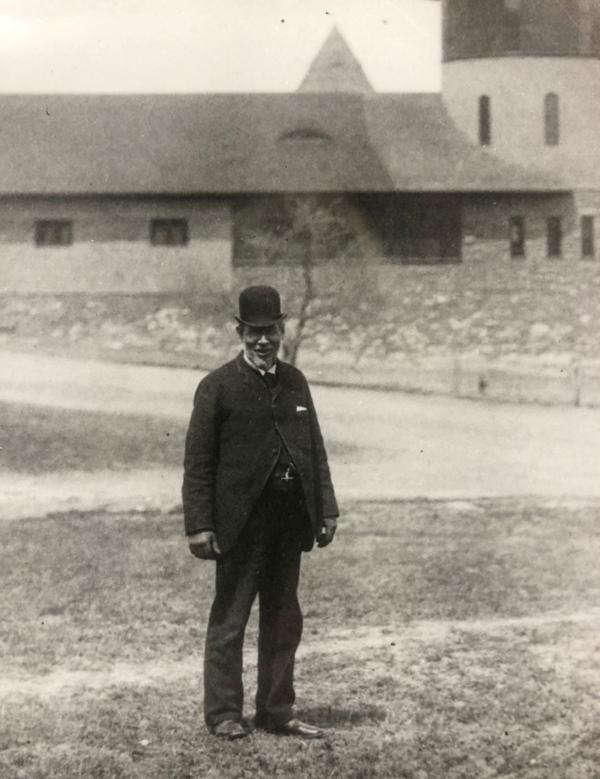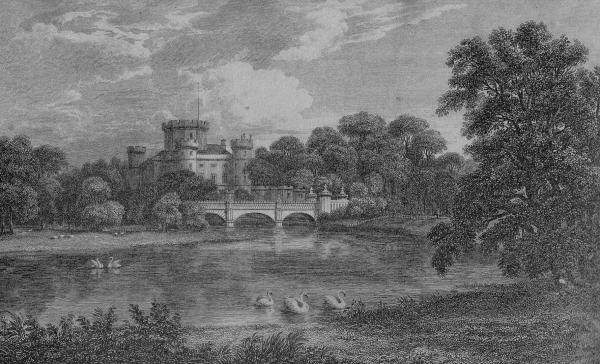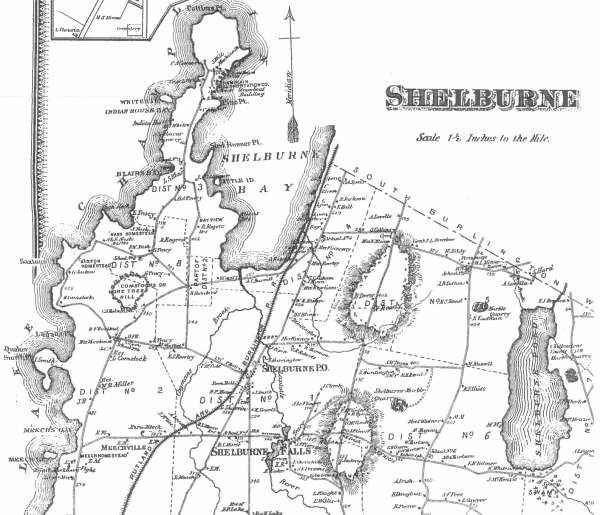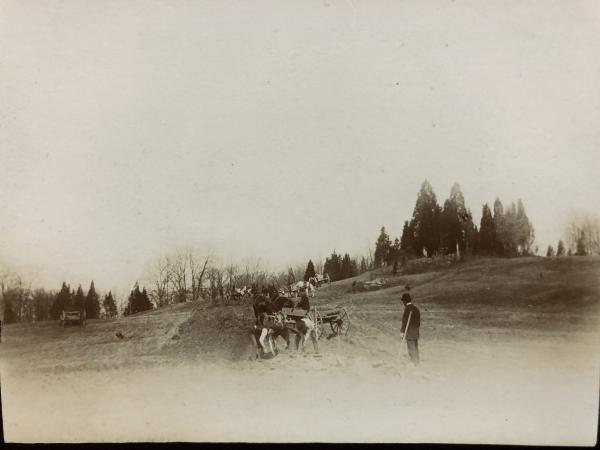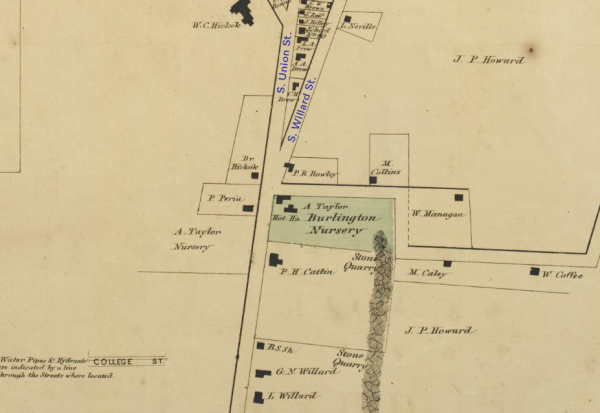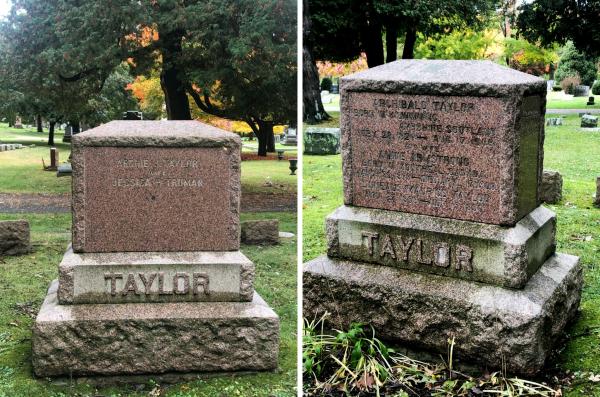Thanks for the informative research on Taylor and the great photo documentation and map.
Archibald Taylor: Realizing Olmsted's Vision at Shelburne Farms
Credit for establishing properties like Shelburne Farms is often given to the owner and architects. In our case, Dr. William Seward Webb is often mentioned, together with renowned landscape architect Frederick Law Olmsted, Sr., and prominent architect Robert H. Robertson.
But these men did not work alone. Olmsted’s involvement with Shelburne Farms in particular was brief, though impactful. It was Archibald “Arthur” Taylor, Shelburne Farms’ first General Manager, who was instrumental in overseeing and creating the Webb’s Vermont properties, first at their experimental Oakledge Farm in Burlington, established in 1884 and then Shelburne Farms, established two years later in 1886. Yet Taylor's contributions to Vermont were last formally acknowledged over 100 years ago in a published biographical sketch.
Surfacing all the stories from within the Archives presents exciting opportunities for everyone to learn more about people and place. In that spirit and with that intent, here’s a closer look at Archibald “Arthur” Taylor.
Born in Scotland on February 28, 1826, the son of Archibald and Agnes (Wilson) Taylor, Arthur Taylor was raised in Kilwinning, Ayrshire, Scotland and in particular, on the estate of Lord Eglinton, where his father served as chief forester. There, Taylor gained experience in both agricultural and forestry pursuits, followed by more formal study and work in landscape gardening. At the age of 25 he moved to Edinburgh and worked for Professor James McNab (1810-1878), head gardener at the Royal Botanic Gardens.
In the beginning, Taylor worked for Dr. William Seward and Lila Webb in two major capacities: he helped broker the sale of small farms that would form Shelburne Farms, and helped build Olmsted’s vision here. He was part of the second major human transformation of this landscape. Each had profound and complicated impacts on the inhabitants and the surrounding community.
The geology and ecology had been laid down long ago: a profound and abundant history millions of years old and many miles deep created the landscape that was first home to indigenous people. Europeans brought the first wave of great change, pushing out many Abenaki through settler colonialism in the 18th and 19th centuries, creating mostly small farms devoted to sheep, apples, and other crops.
The Webbs brought a second wave of change. Between 1886 and 1889, they assembled approximately 2,371 acres by purchasing twenty seven parcels of land. Long time families in the small community of Shelburne, Vermont —Tracy, Morehouse, Saxton, Holabird, Nash, and Comstock to name a few—sold their farms to the Webbs. The Saxton family’s land gave way for a house site while the Hart Farm’s 183 acres became the site for the Greenhouse complex. Mr. Taylor advised Dr. Webb throughout the negotiations, and acted as an agent procuring the core farms.
Beyond land acquisitions, however, Taylor was influential and deeply involved with both Dr. Webb and Olmsted in decisions around the planning, design, and laying out of the property, which would encompass nearly 4,000 acres by 1904. In 1889, Frederick Law Olmsted, Sr. writes to Webb, “We are decidedly of opinion with Mr. Taylor that the South farm would best be a complete establishment by itself, so that there would be little transportation necessary between it and the North farms.” 2
As part of these duties, Taylor oversaw all plant and tree orders, plantings that shaped how people experienced the agricultural estate. In addition, he was involved in engineering and building a new road system. New curvilinear roads helped transform multiple farms into a planned singular estate. Pre-existing roads that connected to town were altered or eliminated altogether. It was an enormously impactful undertaking, on the land, and on the community.
Taylor’s influence in landscape design was not limited to private properties. Like a local Olmsted, he was committed to improving and making available public spaces within the city landscape. As a horticulturist, he ran a nursery business for many years at the base of Willard and Union Streets with hot houses where he sold fruit and ornamental trees, flowers, shrubs and roses. He was also devoted to local public affairs. He was elected as a member of the board of alderman (similar to city council role), and as chairman of the street committee he introduced the first macadamized roads to Burlington. In 1872 he was selected to supervise work on what was called the “College Park” at the University of Vermont. The grounds were to be drained, graded and turfed, and planted with new trees to contribute to the beautification of the campus and the city.3
Arthur Taylor died on August 17, 1908. In this same month the Lone Tree on Lone Tree Hill blew down. These two losses are bound by the landscape for which Arthur Taylor and this ancient tree shared.4 Arthur Taylor is buried at Lakeview Cemetery in Burlington with his wife, Annie Armstrong Taylor and his children, beneath a monumental Oak tree.
Notes:
1 Burlington VT Free Press. November 24, 1876.
2 Frederick Law Olmsted to William Seward Webb, January 24, 1889. Olmsted, Frederick Law, Papers and Olmsted Associate Records. Manuscript Division. Library of Congress, Washington, DC.
3 The Burlington Vt Free Press, June 7, 1872.
4 Lila O. Webb scrapbook. 1902-1913 “Mr. A. Taylor died in Aug. 1908 and in the same month the Lone Tree on Lone Tree Hill blew down.”
Comments
Great new info to me, Julie. Thanks so much
Thanks for researching this article and making available all the background information on the life of Mr. Taylor. It is important that information on those before us is not loss. Articles like this provide historical data on lives and events preceding us. As a VOCA member passing thru a cemetary this type of background info would not be available in passing. I often wonder about the life of the individual who I might be standing before.
Fascinating research Julie, thank you for sharing!!
Great history lesson. Another special person in the history of Vermont.
So glad to learn new information, and I will incorporate in my tours. (When we start again) Thanks for all your work and research.
Thanks for unwrapping another layer of the onion (organic). Those archives have so much great stuff. Neat to hear about history of Oakledge, Overlake, the nursery etc etc.
Can’t wait to see what the next layer is in future blogs…
Thanks for the research Julie. Always informative and necessary to learn of the pieces of history that are part of the founding of the Farms. Well done!
Great article. There's always something new to learn about the Farm's history. Much appreciated.
Remarkable research Julie. Wonderful information. Such an important man in the history of the farm and elsewhere. Thank you!
Julie,
This history is so important for those of us who grew up knowing some of Electra Havemeyer Webb and Lillian Carlisle Baker's elaborate stories.
Lovely job, and best to you and your girls.
Ruthie
Thank you so much, Julie! Your research into Taylor is fascinating. I am always interested in learning more about the area and especially The Farms!
Great info on Mr. Taylor who was clever enough to gather all those acres for the Webbs and then be so creative in pulling them together into the beautiful setting we all enjoy today. He did it when many people would have retired to one of the rocking chairs on the porch!

